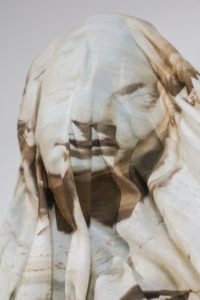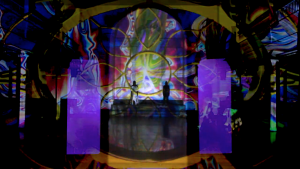“SENEB is a House of extraordinary babes invested in healing,” writes new media artist Tabita Rezaire, describing her web project SENEB, in an interview with herself where she outlines this new practice inspired by a reconstruction of Egyptian polytheism called Kemet. A tech-politics researcher as well as a Kemetic/Kundalini Yoga teacher, the French born Guyanese/Danish and Johannesburg-based artist is a self-described “intersectional preacher” and “health practitioner” working in what her website calls a multidisciplinary approach to “digital healing activism.” Rezaire explores health, technology, sexuality and spirituality through the lens of decolonization, working to dismantle the “pervasive matrix” of white supremacy and its effect on identity.

The artist has experience within a number of fields and platforms — from economics, permaculture, and moving image — also founding tech health agency NTU and co-founding non Euro-centric art platform Malaxa. Her work is shown internationally and extensively, including aqnb‘s the ‘The Future Is Here, It’s Just Not Evenly Distributed’ screening at Berlin’s Import Projects earlier last year and the Wandering/Wilding: Blackness on the Internet group exhibition. That was curated by Legacy Russell and featured a text by Aria Dean and work by the likes of niv Acosta and Hannah Black, as well as a video by curandera artist Fannie Sosa, who also collaborates with Rezaire in her Hoetop Blessings project with Elizabeth Mputu, outlined below.
Reading as part interview, part creative manifesto of radical liberation, the self-interview below follows the artists personal journey leading to her current position on dismantling “the ‘pervasive matrix’ of white supremacy and its effect on identity.”
Tabita Rezaire: SENEB is a House of extraordinary babes invested in healing.
SENEB comes from the ancient Kemetic word/symbol meaning health, but it also means sound or rather ‘to be sound’ or ‘to have soundness.’ I find this relationship divine and fascinating. The power of sound to heal is deep, and it lies in its actual physics, as the vibration of energy patterns at the most subtle level can have immense transformational effects. So SENEB is about harnessing the power of vibration to heal our wounds — may they be physical, emotional, technological, historical or spiritual.
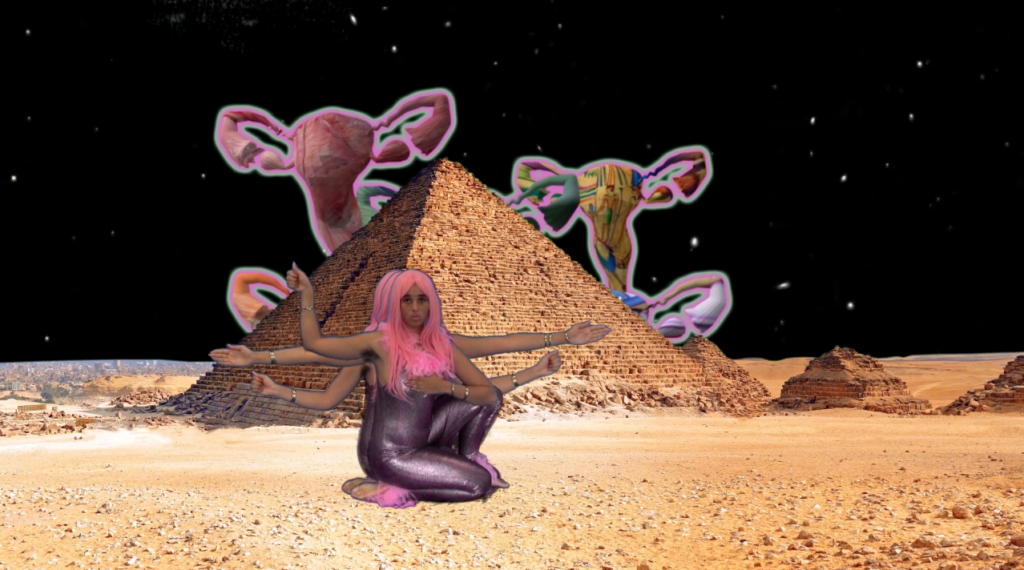
‘Nothing rests; everything moves; everything vibrates’ is the third axiom of Hermetic philosophy which originates from the Kemetic teachings of Tehuti. It’s now acknowledged by Quantum physics, but African spiritual philosophies, beyond Kemet, but this fundamental principle of vibration has been central to many Bantu cosmologies.
We, and everything around us, are energy, vibrating at different frequencies, which gives us the illusion of being separate, but we are a connected mass of energy. I just read a book on Bantu-Kongo cosmology that speaks of waves and radiations (minika/minienie) as responsible for ills in societies, sicknesses and change. That is the law of vibration: the food we eat, the sounds we hear, the thoughts we have… are cosmic waves that we emit, receive or pass on. We affect and are affected by all those different vibrations… watch out for energy vampires!
The house of SENEB is a community of people engaged with African and Diasporic healing technologies, an energy center for us to remember, feel, (re)connect, share and vibrate high so as to nurture our health, energy and wisdoms.

TB: Why is the focus on health important to you?
TB: The world most of us live in (aka racist-cis-het-capitalist-patriarchy) is designed to break us down and keep us in a state of lower vibration which makes us emotionally, mentally, politically and spiritually unbalanced. We are not living according to divine laws, that’s why we feel like shit.
Health for me is not about a moralistic lifestyle (‘healthy’, ‘fit’…) rather it’s a state of feeling connected, it’s being aligned with your purpose. There’s no righteousness here, its about having soundness, and there are as many ways of doing that as there are people. It is a deep feeling of belonging and being looked after by the universe because you live in a higher vibratory state.
Health is obviously tied to politics as the pharmaceutical-medico-legal complex directly benefit from our energetic imbalances. How can we sustain our health outside of this exploitative machine that keeps us vulnerable and dis-eased for profit? Especially for Queer/Trans/Femme/Black/Brown/Indigenous/Poor people as targets of racialised and gendered capitalist violence(s).
This is the continuing legacy of a colonial history, the same bodies are denied humanity and exploited, the same people whose knowledge(s) are being erased, or capitalized on while made shameful, the same people hurting and the same people living it.
Reclaiming our agency in taking care of ourselves, in healing ourselves is an urgent necessity. We need tools to protect ourselves from energetic and biological warfare. Understanding health more holistically and outside of western obsession with pathologies and symptom-solving is also part of decolonization.
Health is about awakening spiritually for a more efficient struggle. Whatever way helps you to connect to yourself and everything around you, the possibilities are infinite, but it always comes down to the mechanics of vibration.
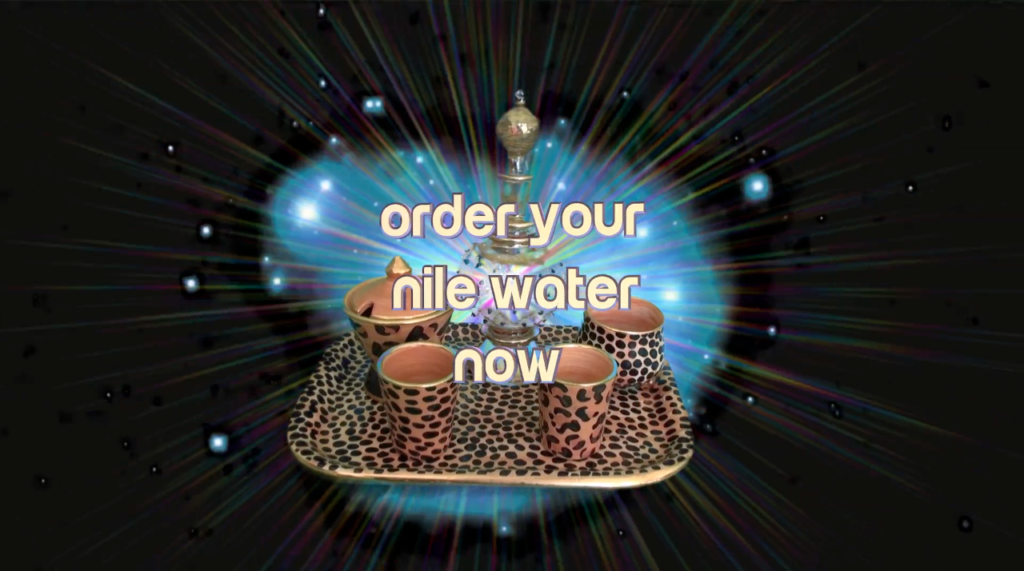
TB: On Seneb’s website you feature Nile water healing? How does it work?
TR: I believe water can heal, because water remembers, water knows, and it is soothing af [as fuck]. Water is energy. Water is life. Literally. We are also made of up to 60% water so we are water, and we all come from the water of a womb. The same way it is weaponized against us as biological warfare – industrial pollution, forced chemical consumption, unfair distribution – water can be used to heal. It has been used as a healing technology forever in many traditions — for libations, ritual baths, as medicine or through the worship of water deities…
Last May I was invited to CairoTronica and I ended up in Nubia – home of the Black African population of Egypt. I stayed in Hessa, a small Nubian island on the Nile off Aswan. It was one of the most beautiful place I have ever been to, and it’s also one of the few places you can still swim in and drink water from the Nile River. It felt so right, I don’t remember feeling so at peace, ever. I believe it was the water. I have such a strong connection to water — I’ve been told by a sangoma [diviner from Nguni, Sotho-Tswana and Tsonga societies of Southern Africa] that I should stop looking for home and that the ocean is the closest to home I’ll ever feel.
I guess I felt home in this river, I know I was supposed to be there (infinite love to Islam, Farra and Khaled). I sent and received so many blessings in this water that I brought some home with me. I spread it in jars around my house, gave some to friends and I thought more people should benefit from its power.
So, yes, on my website you can write what you need healing for and I’ll make a little offering of Nile Water and send those healing energies your way. I’m just following a long tradition of worshiping Nile water for her healing power. I believe in her power, and believing is the first step of manifesting.
There is this phrase in The Quiet Violence of Dreams by K. Sello Duiker that stayed with me: “We’re not all mystics who can extract beauty from our pain.” If you can, I feel it’s your responsibility to serve those who can’t yet.
Hoetep Blessings is an offering from Elizabeth Mputu, Fannie Sosa and myself. This trilogy of Black diaporic remembrance celebrates spiritual knowledge(s) and Black femme technologies. It is a celebration of the divine power of the cunt, a litany for survival and pleasure, and a means to weaponize our melaneted femmeness.
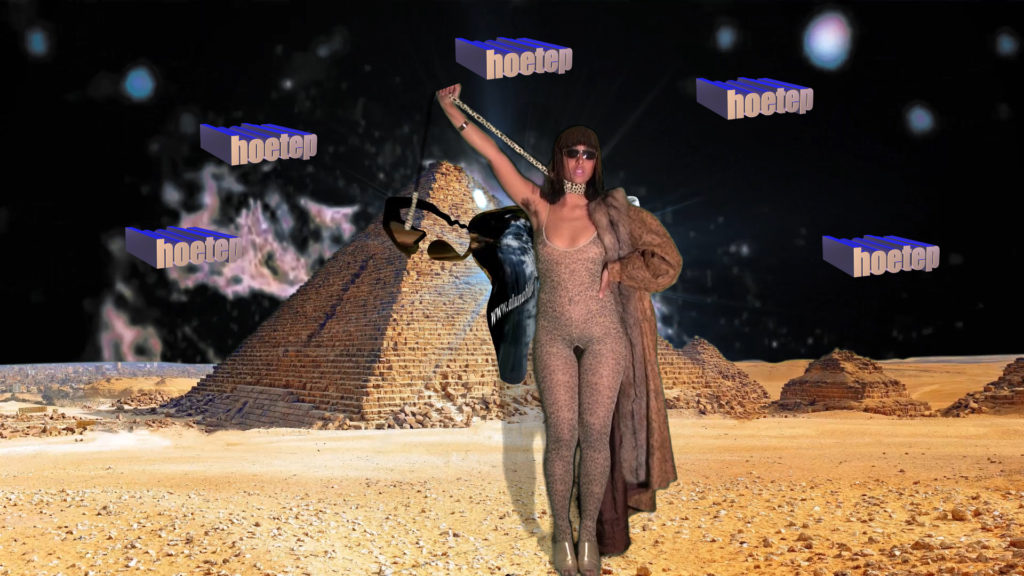
In a world that murders, deshumanizes and exploits femme-ness and blackness, that works hard at alienating alliances between us, it is important to (re)imagine ways of connecting the healing feminine energy to a politics of radical liberation.
Hoetep Blessings is an affirmation of unapologetic hoe-ness into political distress.
How or where can we seek refuge from these dark times? What do we do with all those feels? I saw Angela Davis talk and she said ‘the young generation of activists stand on our shoulders, but we do not provide a steady foundation’. How do you keep walking when the ground is crumbling?
SENEB’s trilogy proposes Hoeteping as a healing strategy.
Hoetep is about reinstalling the power of the kemetic-bantu word htp (meaning to be at peace or altar, and communally-written and pronounced ‘hotep’) against what it has recently come to mean on the Internet— a problematic category of Black men. Hoetep rescues the spiritual power of the cunt, of femme-ness, of the ‘hoe’, within Blackness, that which those trolls try hard to disgrace. There is this Kemetic adage: ‘As for us, we do not use words but sounds filled with power’; Ho(e)tep is one of these we should respect.
Hoetep Blessings is an offering to Black femme spirits.
Elizabeth Mputu’s gift is a meditation on police brutality. She says of her work:
“This particular meditation was birthed out of the need to feel in control of my own well-being, as well as out of the belief that efforts rooted in the drive of the collective conscious have a better chance of integrating into the framework of our society’s makeup. As a black femme online, the sensibilities that plague us in our daily lives concerning safety and longevity follow us into this virtual realm.
The media that strives to cause insecurities to arise in us is heightened on this platform, and when news of violence against our people enters into these arenas it can send us into hysteria that makes our virtual world a simulation of the perpetuated violence we work at all angles to escape. After the deaths of Alton Sterling and Philando Castile, I found myself asking in my body what resistance looks like, and how that frame of mind could be channeled even in settings that otherwise trigger us to feel powerless. This piece seeks to take oppressive tokens — like the phrase “Hands up, don’t shoot,” the imagery of blue and red flashing lights made infamous as police insignia, and the mentality of the punishment society our culture banks on for false illusions of security — and repurpose them as catalysts for change in the imagined world this guided meditation encourages us to create.
In a society where trans people of color are seven times more likely to experience brutality at the hands of the police than their cis counterparts — even within queer communities, with no media coverage — it’s important that we take the time to acknowledge that all of us are subject to this violence, not just black men. Our compliance in sustaining this system is imminent if we first and foremost do not address our own emotional attachments and social conditioning that causes us to accept the U.S. crime and punishment process — this piece intends on challenging the participant to re-examine the ways in which our institutionalized mechanisms for protection have failed us, and hopes to provoke fresh insightful visions of reform and abolition.”

Fannie Sosa offers us a sonic journey into womb, bass resonance and orgasmic healing:
“This video is a crystallisation of several threads that have been going around in my life for a while. The threads are: the healing and evolutionary power of khunt orgasmic experiences, the blatant disregard of Black dance and song and their technologies as healing devices, ie. scientific and epistemological racism, the amount of research and resources that go into weaponising these same technologies against the very people that first conceive them, this experience that I had a couple of years ago, when I literally felt bass fill my womb and make it vibrate into orgasmic release… A lot.
Around this time my friend Shookofeh told me about this vibrator called “the womaniser”. When I first experienced it I realised that it made so much sense to conceive a vibrational device that is round and hollow, in the image of the cervix, instead of designs like the ‘bullet’ that reinstate phallic and warfare language even in clitoral stimulation. I had been lending it to all my friends and my roommate at the time left me a note saying “I need this in my life” after she experienced it. At that moment I had a bit of a revelation: we need this round, vibrational, healing technologies in our life, and sort of was able to channel all of what I had been thinking and knowing into this video.”
Liz, Fannie, thank you for your guidance and s/o [shout out] to all the SENEB babes out there.
TB: What’s next for Seneb?
TB: More divine juice from our tribe. New technologies of struggle. Seneb Summit. AN IRL space. Land. A village. A place to be, to thrive, to be sound.**
Tabita Rezaire is a Johannesburg-based artist and Mother of the House of SENEB.
